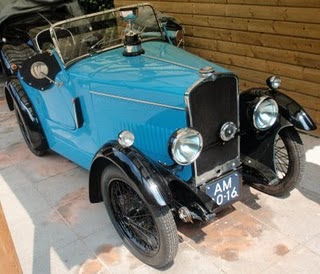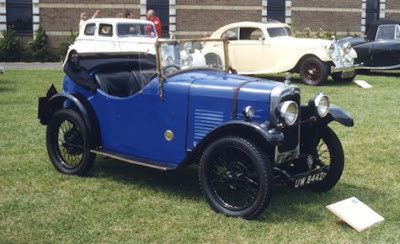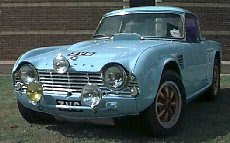A popular vehicle that was made by
Triumph Motor Company in Coventry, England the
Triumph Gloria was produced from 1933 until 1938. The
Triumph Gloria was available in a very large and quite confusing range of
Triumph Gloria sporting
salons,
tourers, coupes,
drophead coupes, 2-seater sports vehicle and golfer's coupes.
A short chassis sports vehicle, the
Triumph Gloria Southern Cross which was also a '
SX' was available in a variety of
tourer and
saloon bodies that were equipped with either four or six-cylinder engine. Quite a modern vehicle mechanically, the
Triumph Gloria SX featured Lockheed hydraulic drum brakes, Luvax adjustable shocks that could be adjusted via a knob between the seats, and a 12 volt electrical system. Power was found from the Climax 4-cylinder engine which was now upgraded to 1232 cc alternatively. In 1935 only a 6 cylinder 1476 cc engine was available too.

Picture Of
Classic Triumph Cars
All of these
Triumph Gloria models, except for the final two models; 1.5 liter Saloon and Fourteen Six-Light Saloon, were powered by 1087 or 1232 cc four cylinder or 1467 or 1991 cc six cylinder Coventry Climax overhead inlet and side exhaust valve designed engines. Two different length chassis were available for the
Triumph Gloria, with an additional 8 inches ahead of the passenger compartment depending on whether the four or six cylinder engine was fitted. The chassis also had conventional non-independent suspension with semi elliptic leaf springs. The brakes inside the
Triumph Gloria were hydraulically operated by utilizing the Lockheed system large 12 inch drums. Allowing for 'clutchless' gear changing, a four-speed transmission was fitted with an optional free wheel mechanism. On the final Fourteen and 1.5 liter models were fitted with synchromesh.
From 1934 until 1936 the
Triumph Gloria range expanded to include
Triumph Gloria Vitesse models which were up-rated with twin carb engine and equipment, versions of the standard
Triumph Gloria but with slightly different bodywork in the case of a few saloons. In 2008, Lansdowne Models introduced a die-cast model of the 1935/6
Triumph Gloria Vitesse Sports Saloon.
The 4-cylinder engine could be ordered with the '
Vitesse' option which meant polished ports, a sharper cam, and double SU carbs. Top speed was set around 120 kph for the 4-cylinder and around 130 kph for the 6-cylinder model. The
Triumph Gloria SX was entered again into the
Monte Carlo rally in 1936 and achieved second place in the light
cars class. In the ladies cup, another
Triumph Gloria SX took third place.
The
Triumph Gloria Southern Cross was extremely effective in achieving the popularity of the later
Triumph roadsters based on its pre-war success in competition.




























































